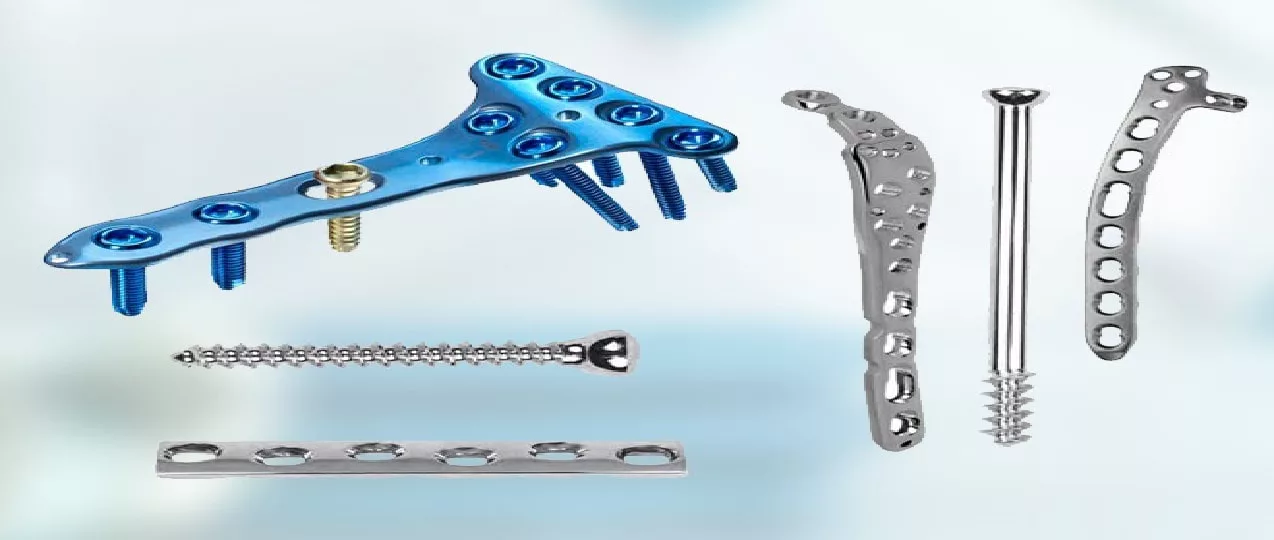
With their ability to treat musculoskeletal injuries and disorders effectively, orthopedic implants have transformed the area of orthopedics. These implants are intended to restore or replace lost or damaged tendons, ligaments, joints, and bones.
We may learn more about the usage of orthopedic implants and the developments in medical technology by investigating the different kinds that are currently accessible. Let’s examine the many types of orthopedic implants and their uses.
What Are Orthopedic Implants?
Orthopedic implants are medical devices that are surgically inserted into the body to support or replace musculoskeletal structures that have been injured or are ill. These implants are often made of bio-compatible materials like titanium, stainless steel, or cobalt-chromium alloys.
Types of Orthopedic Implants
1 Orthopedic Screws
Orthopedic screws are flexible instruments used to fasten together broken or broken pieces of bone. They offer support and stability throughout the healing process, enabling appropriate bone fusion.
Orthopedic screws, such as cortical screws, cancellous screws, and lag screws, come in a variety of sizes and forms.
While cancellous screws are made for softer bone structures like those found in vertebral bodies, cortical screws are used in thick bones like the long shaft.
Lag screws are used to squeeze shattered bone pieces together. These screws are frequently employed in treating bone defects, joint restoration, spinal fusion, and fracture fixation.
2 Orthopedic Prostheses
Artificial devices called orthopedic prostheses are used to replace sick or injured joints. They are designed to increase mobility generally, lessen pain, and restore joint function.
The most popular orthopedic prostheses include joint replacements for fingers, ankles, elbows, and hip, knee, and shoulder implants. These prostheses precisely mimic the anatomy and motion of the joint they replace.
They comprise two parts: the bearing surface, which enables smooth articulation, and the implant, often constructed of metal alloys or high-density polymers.
Orthopedic prostheses considerably improve the quality of life for people with osteoarthritis, joint degeneration, or joint damage from trauma.
3 Orthopedic Plates
Metal implants, or orthopedic plates, support broken bones and speed up healing. These plates offer stability and support during the healing process by being screwed onto the surface of the bone.
Orthopedic plates come in various forms, lengths, and profiles for use with diverse bone sizes and fracture patterns. They are frequently used in reconstructive procedures and in treating upper and lower limb fractures.
Different types of plates, including compression plates, buttress plates, and locking plates, may be used depending on the severity and location of the fracture. These plates encourage bone union and help to maintain appropriate alignment.
Orthopedic Implants Uteshiya Offers
A reputable orthopedic implant manufacturer and supplier, Uteshiya Surgical provides a wide selection of premium implants used in orthopedic surgery.
Orthopedic screws, prostheses, plates, nails, wires, and external fixation devices are among the items in their product line.
As a result of Uteshiya Surgical’s dedication to accuracy, dependability, and individualized solutions, their implants are of the best possible quality and effectiveness. Their implants are carefully designed and constructed to allow successful surgical results and support the recovery of patients.
Conclusion
With the help of orthopedic implants, patients can regain mobility, manage pain, and enhance their quality of life. In the therapy of musculoskeletal problems, various orthopedic implants, such as screws, prostheses, and plates, have specific functions.
Implant technology developments continue to improve surgical results and support the development of orthopedic procedures. Patients can access a variety of trustworthy and efficient orthopedic implants that help them on their road to recovery thanks to manufacturers like Uteshiya Surgical’s ongoing dedication.
FAQs
What Is The Difference Between Implant And Prosthesis Orthopedic?
Orthopedic Implants: To support, stabilize, or fixate bones, joints, ligaments, or tendons, implants are used.
Orthopedic Prostheses: Alternatively, prostheses are artificial devices that replace a missing or damaged body part.
What Are Most Orthopedic Implants Made By?
Most orthopedic implants are made with bio-compatible materials that the body can tolerate. Among the materials most frequently utilized for orthopedic implants are Titanium, Stainless Steel, Cobalt-Chromium Alloys, and High-Density Plastics.

